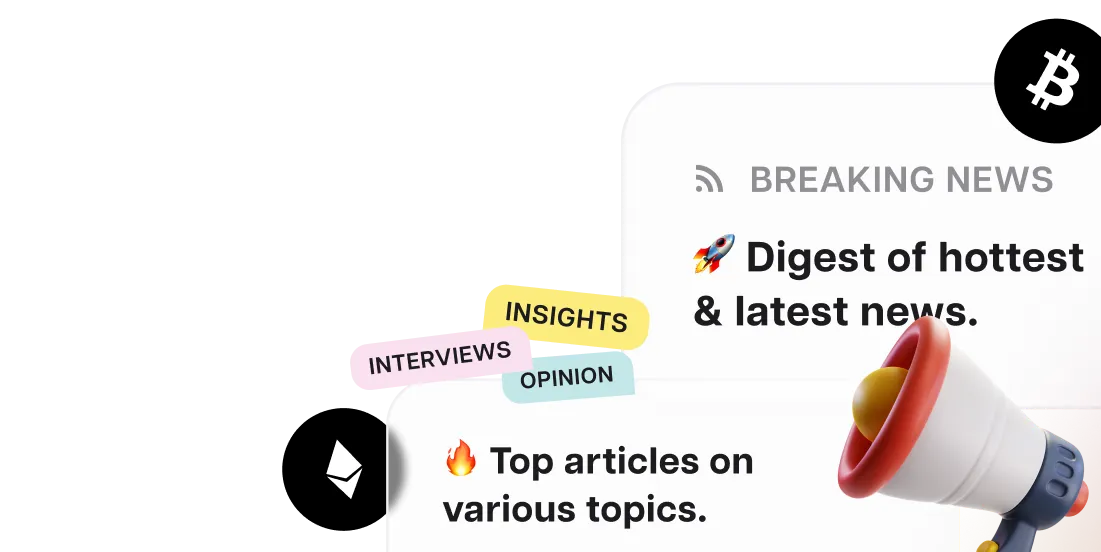🚀 Ethereum’s Reign Faces Threats — What Grayscale’s Report Reveals
posted 31 Dec 2024
The battle for dominance in smart contract platforms rages on. Ethereum held its throne in 2024, riding high on U.S. ETP approvals and a critical upgrade, but challengers are closing in.
While Ethereum marked several key achievements, Solana surged ahead in growth, reinforcing its status as the second-largest platform in the space.
At the same time, users have started exploring alternative Layer 1 networks, including Sui and The Open Network (TON), adding another layer of competition to the industry, according to Grayscale Investments.
The Blockchain Trilemma: Finding the Sweet Spot Between Speed, Safety, and Decentralization
Every blockchain struggles with the "Blockchain Trilemma," the tricky balance between scalability, security, and decentralization.
The way these priorities are handled determines transaction speeds, network capacity, and fees—giving each platform its own unique flavor.

Meanwhile, Ethereum takes the high road, prioritizing decentralization and security—even if that means slower speeds and steeper fees, thanks to transaction prioritization wars.
It’s no surprise these trade-offs steer the preferences of both developers and users.
The Power of Fees: Why They Matter for Smart Contract Platforms
Grayscale argues that fee revenue is a crucial measure of a smart contract platform’s success.
As the chart below shows, there’s a strong link between fees generated and market capitalization. High fee revenue enables networks to give back to their ecosystems, whether by burning tokens or increasing staking rewards.

Check it out: Grayscale Files for Solana Spot ETF Conversion
The New Kids on the Block(chain): Sui and TON
2024 saw rising stars like Sui, known for its turbocharged performance, and TON, which brings Telegram into the blockchain game. These platforms shine with ultra-low fees, lightning-fast transactions, and a knack for slotting into digital ecosystems, including social media.
This year flipped the script for DeFi, showcasing just how far blockchain has come. The real winners? Networks that nail the balance between scalability, security, and decentralization.
At the same time, users have started exploring alternative Layer 1 networks, including Sui and The Open Network (TON), adding another layer of competition to the industry, according to Grayscale Investments.
The Blockchain Trilemma: Finding the Sweet Spot Between Speed, Safety, and Decentralization
Every blockchain struggles with the "Blockchain Trilemma," the tricky balance between scalability, security, and decentralization.
The way these priorities are handled determines transaction speeds, network capacity, and fees—giving each platform its own unique flavor.

Smart Contract Platforms at a Glance. Source: Grayscale
Solana’s all about scalability, delivering blazing-fast transactions and dirt-cheap fees.
Meanwhile, Ethereum takes the high road, prioritizing decentralization and security—even if that means slower speeds and steeper fees, thanks to transaction prioritization wars.
It’s no surprise these trade-offs steer the preferences of both developers and users.
The Power of Fees: Why They Matter for Smart Contract Platforms
Grayscale argues that fee revenue is a crucial measure of a smart contract platform’s success.
As the chart below shows, there’s a strong link between fees generated and market capitalization. High fee revenue enables networks to give back to their ecosystems, whether by burning tokens or increasing staking rewards.

More fees = higher market cap. It’s that simple. Source: Grayscale
Ethereum is still the front-runner, but Solana and its rivals are making waves. Thanks to its lightning-fast transactions and low fees, Solana is a favorite for large-scale apps, while Ethereum continues to dominate the DeFi scene.
Check it out: Grayscale Files for Solana Spot ETF Conversion
The New Kids on the Block(chain): Sui and TON
2024 saw rising stars like Sui, known for its turbocharged performance, and TON, which brings Telegram into the blockchain game. These platforms shine with ultra-low fees, lightning-fast transactions, and a knack for slotting into digital ecosystems, including social media.
This year flipped the script for DeFi, showcasing just how far blockchain has come. The real winners? Networks that nail the balance between scalability, security, and decentralization.
More breaking news
More breaking news
Breaking news
KuCoin Launches KuCoin Pay — Redefining Retail Payments
Breaking news

